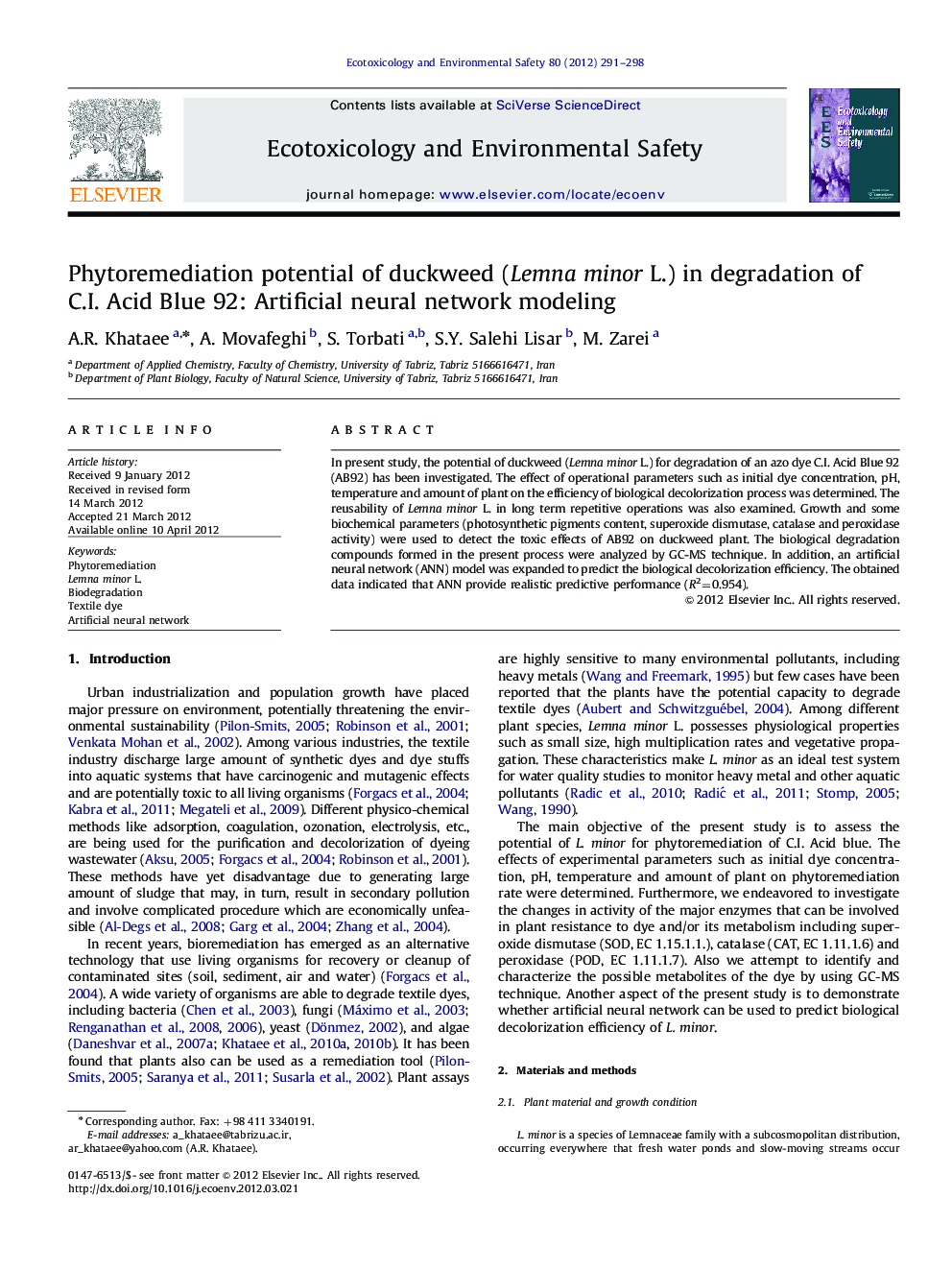| Article ID | Journal | Published Year | Pages | File Type |
|---|---|---|---|---|
| 4420696 | Ecotoxicology and Environmental Safety | 2012 | 8 Pages |
In present study, the potential of duckweed (Lemna minor L.) for degradation of an azo dye C.I. Acid Blue 92 (AB92) has been investigated. The effect of operational parameters such as initial dye concentration, pH, temperature and amount of plant on the efficiency of biological decolorization process was determined. The reusability of Lemna minor L. in long term repetitive operations was also examined. Growth and some biochemical parameters (photosynthetic pigments content, superoxide dismutase, catalase and peroxidase activity) were used to detect the toxic effects of AB92 on duckweed plant. The biological degradation compounds formed in the present process were analyzed by GC-MS technique. In addition, an artificial neural network (ANN) model was expanded to predict the biological decolorization efficiency. The obtained data indicated that ANN provide realistic predictive performance (R2=0.954).
► Determination the potential of L. minor for phytoremediation of AB92. ► Assessment of effects of experimental parameters on biological removal of AB92. ► Investigation the changes in some enzyme activities involved in metabolism of dye. ► Identification the possible metabolites of this dye using GC-MS technique.
